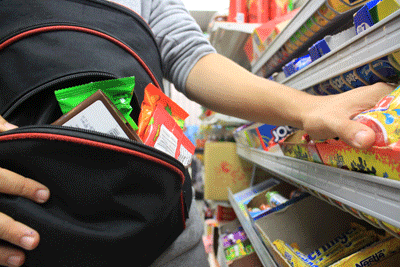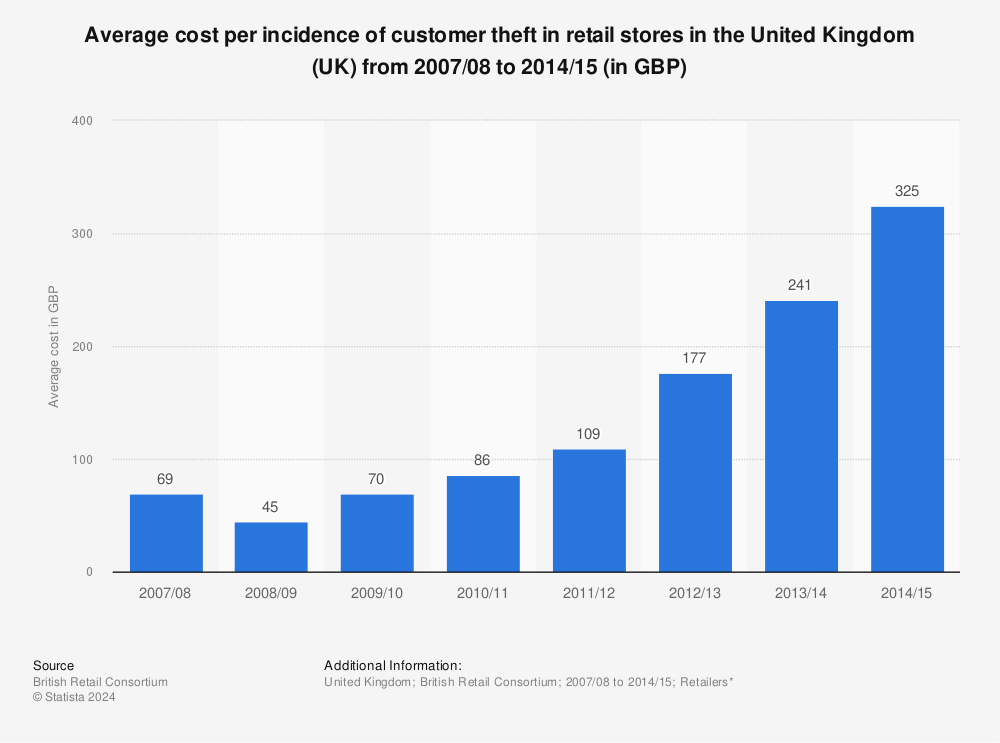
Disclaimer: As an Amazon Associate, “Furniture UK” earns from qualifying purchases.
Retail crime refers to the loss of stock due to crime, error or waste and is usually calculated as the percentage of sales. After some recessionary fluctuations, retail crimes declined to 1.32 percent in 2012-2013 of total sales in retail in contrast with 1.37 percent in 2011. A decade prior, the retail-related cost stood at 1.77 percent and 1.29 in 2010.

Between 2012 and 2013, customer theft stood at £2.206 billion, employee fraud and theft at £1.681 billion, warehouse and supplier fraud at £246 million, card fraud at £85 million, burglary and robbery at £120 million, criminal damage at £81 million, and cyber-fraud at £280 million for a total of £4.699 billion. Within the same period, the loss prevention and security-related cost stood at £995 million in the retail industry. Thus, the total cost of retail crime stood at £5.694 billion.
Sophisticated cost
In 2015, the British Retail Consortium reported that retail theft had gone down, but the value of a single robbery is now costly at £325. Across the UK, however, the yearly retail crime cost went up to £613 million in 2015 and stood as the highest since records started being kept. This is because criminal gangs have become sophisticated and target luxury goods such as hi-tech gadgetry and designer clothing.
In contrast with 2014, it was a 2 percent increase in the retail industry. While the direct crime cost has broken the record and is the highest in recent memory, it was three times more than retail crime in 2007-2008. The offences numbers have decreased just like in 2014, with about 750,144 reported incidents. With the high value of stolen items, the dropped crime incidents indicate that the dip is not worth talking about as retail crime has changed in sophistication as theft to order is catching up. Customer theft accounts for most retail crime incidents, which is about 83 percent in total.
Retail crime equipment has also increased in sophistication as foil-lined bags and de-taggers are used to lower the chances of being detected, even as reports and surveys indicate 40 percent of the crimes are attributed to organised gangs that usually work in groups. At the same time, online cyber-attacks have increased by 55 percent.
They account for over a third of the retail crime cost at 36 percent. Retail cr me’s human cost has also increased, with a 28 percent rise in cases involving violence or abuse against retail staff. The increase stood at 41 crimes out of 1,000 committed crimes, contrasting with 32 offences out of 1,000 committed crimes in 2014.
The cost of crime is growing
This shows that the retail sector’s crime cost has been burgeoning regarding finances and human costs. This comes as retailers continue cutting food and clothing costs to lower the average cost of a shopper’s weekly basket as gangs of criminals are going for very sophisticated theft techniques to steal luxury goods and target retail employees, not only with violence but also with abuse at their work stations in retail shops.
Analysts believe the retail sector has a difficult time ahead as police budgets tighten and tough choices on policing priorities and resources lie ahead. Businesses and the police must work together to deal with retail crimes as a unit.
In 2010, the estimated cost of employee error, staff theft and shoplifting in retail stood at £4.9 billion, the highest figure ever recorded. This was believed to have worsened economic conditions and fuelled even more crimes in the same sector. By June 30th 2011, retail crimes in the UK rose by 6.2 per cent per the Global Retail Theft Barometer reports. Shoplifting losses were almost 44 per cent of the £4.9 billion, while employee error and theft were about 36 per cent in 2010. In 2012, the total cost of retail crime increased to £1.6 billion. However, these figures are just a tiny part of the enormous problem of retail crime, considering that about 9-10 percent of customer-related theft is reported.
With the retail sector injecting £321 billion into the economy or 20 per cent of the entire GDP annually, the retail crime increase is not good news and means it’s not just the retail sector that’s losing. It means the retail industry has no choice but to invest in retail-related security using sophisticated technology such as electronic article surveillance, sophisticated CCTV, merchandise alarms, bulky packaging and dye/ink tags.
According to the PWC Information Security Breaches Survey of 2015, security breaches have increased in terms of cost and scale, with over 10 percent of those surveyed indicating that they had to change their businesses and how they do business due to the worst breaches they’ve encountered.




![Report on the British educational furniture manufacturers group [BEFMG]](https://thehome.co.uk/wp-content/uploads/2018/02/report-furniture-uk.jpg)



